Please note these plant profiles are a work in progress. I will always be adding to them as I keep learning about the amazing world of plant medicine.
Botanical Overview
Latin name: Prunella vulgaris
Plant family: Lamiaceae (mint family)
Identification: Selfheal has short, upright, square-sectioned stems bearing stalked small, oval, sparsely hairy leaves and short blunt flower spikes. The leaves are untoothed and not glossy, and the flowers are purple (1). They have a spreading mat-like habit and are semi-green perennials.
Other species: Can be mistaken for Bugle (Ajuga reptans) – but worth remembering that bugle has blue flowers not purple and a bit of a different growing habit (like taller spikes rather than spreading like Selfheal).
Folk names in English: Selfheal , heart’s ease, pickpocket, poverty pink, heart o’ the earth, heal-all, woundwort, blue curls, sicklewort, Carpenter’s Herb touch and heal. Ceannbhan beg is the Irish Gaelic name. Vulgaris means common in Latin. ‘Brunella’ in German means quinsy, which is one of the uses Selfheal is indicated for.
Chemical constituents: Flavonoids including rutin, vitamins A, B, C, K, fatty acids, volatile oil, bitter principle, pentacyclic triterpenes based on ursolic, betulinic and oleanolic acids, tannins, caffeic acid, rosmarinic acid (2).
Food and nutrition
Selfheal is edible. The raw leaves and flowers can be added to salads. They are quite bitter in flavour so they’ve often been made to taste nicer through cooking. They were traditionally used as a potherb and added to soups and stews.
Ecological role
Selfheal can be found on dry to moist, neutral to basic soils in unimproved short grasslands, in rush mires, woodland glades and along roadsides, tracks and paths (1). It’s also common in lawns. I have also found selfheal growing in the lawn where I live amongst daisies, as well as on bare soil in the polytunnel. They are very attractive to bees and other beneficial insects. Selfheal is very tolerant of poor soils and was often considered an indicator of them.
Cultivation: You can grow selfheal from seed or by dividing larger plants. It can tolerate full sun and partial shade.
Energetics
- Temperature: Cooling
- Moisture: Drying
- Tissue State: Heat/Excitation, Wind/Tension
- Taste: Bitter, pungent
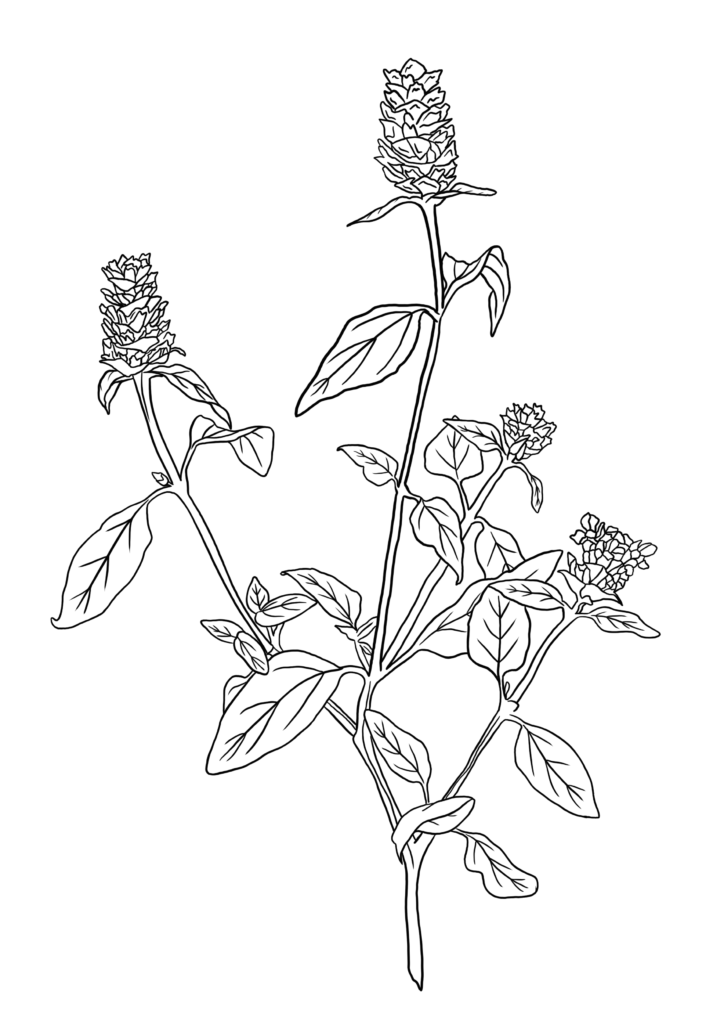
Selfheal drawn by Amani Omejer
Health challenges supported by Selfheal:
Selfheal has a broad heritage of traditional use, especially in Ireland and England. It is also used in traditional Chinese medicine, though harvested at a different time in its life cycle.
Herbal actions: Antibacterial, antioxidant, anti-tumor, astringent, diuretic, liver stimulant, reduces blood pressure, vulnerary (2).
Wounds: Selfheal can help staunch bleeding and aid with wound healing. Recent research has shown it to be antibacterial and that it may play a role in alternatives to conventional antibiotics that bacteria are increasingly adapted to. As recently as the second world war there are records of charcoal burners in Kent using selfheal for cuts and bruises (3). It can also help reduce the swelling of bites and stings (4).
Mouth and throat problems: Due to its astringent nature and ability to heal wounds, it is highly effective for treating mouth and throat problems. Selfheal has been used as a mouthwash and gargles for a sore throat, gum inflammation and mouth ulcers.
Flu, fevers and viral infections: Selfheal can help with hot fevers and warm flu conditions with its cooling, immune stimulating and antiviral qualities. Research has shown it to be an excellent antiviral effective against Herpes and the Human Papilloma Virus (4).
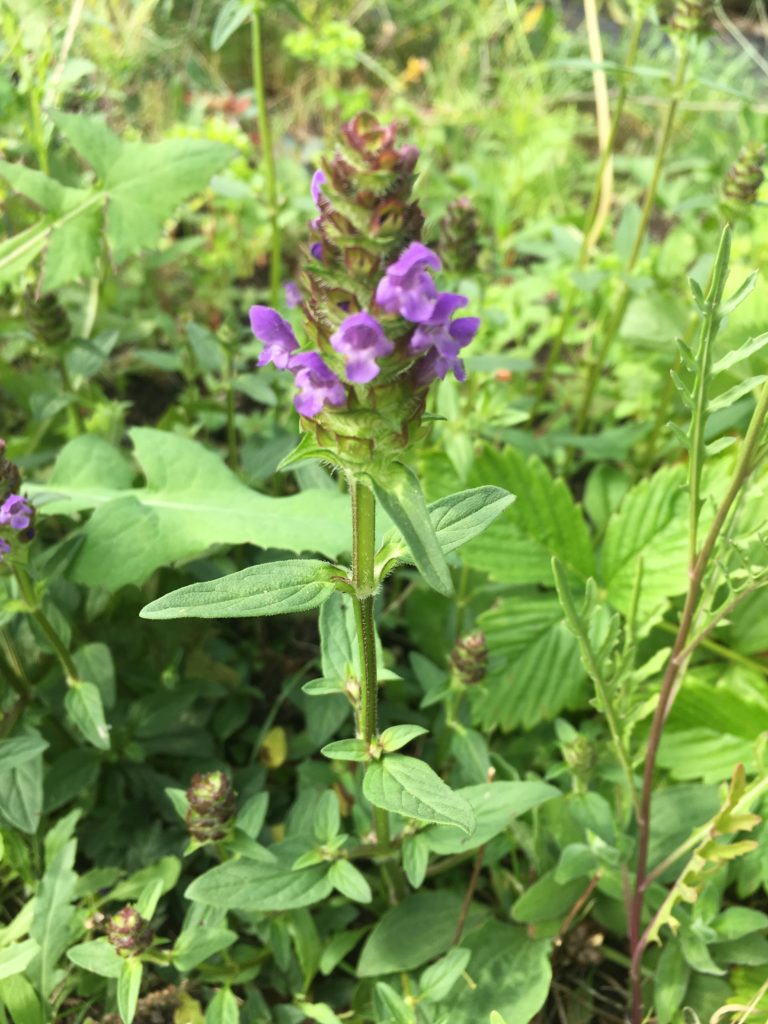
Diarrhoea: Selfheal has been taken internally as a tea to help with recovery from diarrhoea.
Lymphatic system: Herbalist Ally Hurcikova writes how Selfheal has an affinity for the lymphatic system and can be taken for swollen glands, mumps, glandular fever, mastitis, nodules, cancer or other lingering infections (4).
Allergies: Due to its action on the lymph, selfheal has been indicated to help seasonal allergies. It contains immunomodulating polysaccharides which support the immune system helping the body to respond to allergies rather than suppress them (5).
Thyroid issues: Ally notes that Selfheal has a normalising action on the thyroid, stimulating an underactive thyroid and reducing an overactive one (4).
Support for cancer treatment: One study on people with breast cancer showed that Selfheal prevented side effects, namely, neutrophil-reduced fever and anemia caused by chemotherapy. This study indicates different interesting advantages of using Selfheal during cancer treatment, such as improving overall survival rate (6).
Urinary tract infections: Selfheal has been shown to be effective for urinary tract infections, including E.coli infections (7).
Cautions: It is not recommended to consume Selfheal if you are taking blood thinning medication.
Selfheal and the Solidarity Apothecary
Selfheal will be featured in my upcoming Prisoner’s Herbal book. It’s widespread means that it is great in situations where access to certain medicines like tinctures is impossible. It’s a great tool in the emergency response toolkit.
Sources
1. Plants and Habitats, Ben Averis
2. Selfheal Monograph, The Plant Medicine School
3. Medicinal Plants in Folk Tradition. An ethnobotany of Britain and Ireland, David E. Allen and Gabrielle Hatfield
4. https://www.grassrootsremedies.co.uk/2016/11/07/herb-profile-self-heal/
5. https://commonwealthherbs.com/self-heal-herb-of-the-week/
6. Oral Administration of Prunella vulgaris L Improves the Effect of Taxane on Preventing the Progression of Breast Cancer and Reduces Its Side Effects. Zhao J, et al. Front Pharmacol. 2018.
7. Antimicrobial activity of Prunella Vulgaris extracts against multi-drug resistant Escherichia Coli from patients of urinary tract infection. Komal S, et al. Pak J Med Sci. 2018 May-Jun.


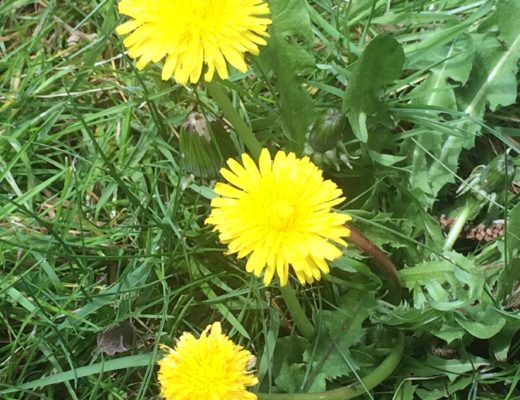
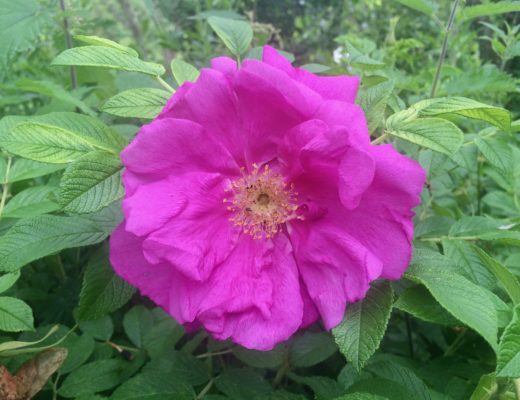
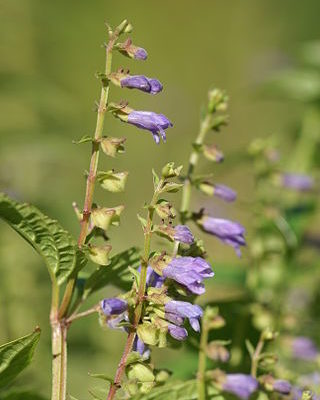
No Comments